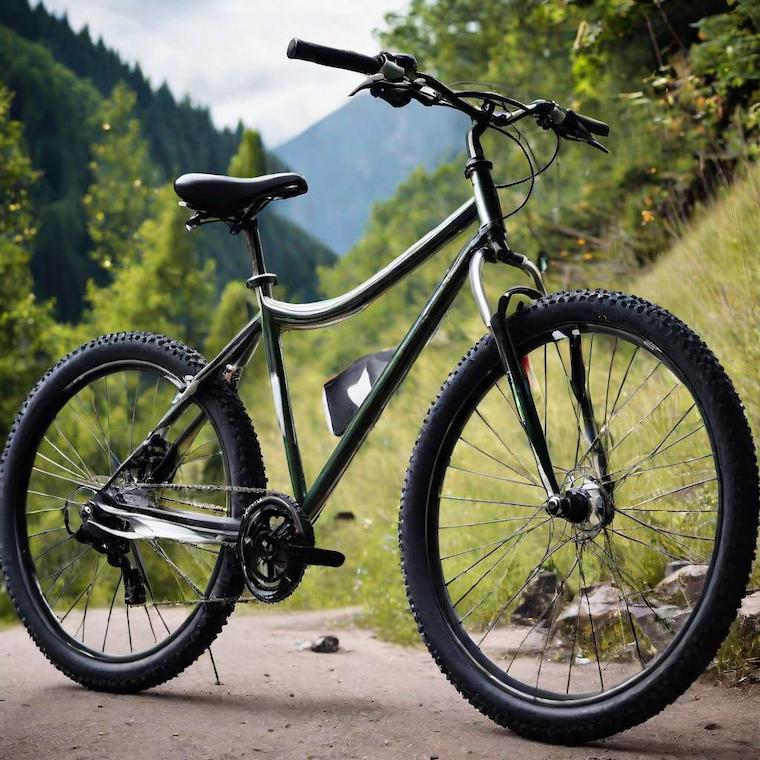Choosing the right bicycle is crucial for enjoying your cycling experience to the fullest. Whether you’re a casual rider or a seasoned cyclist, selecting the right bike can significantly impact your comfort, performance, and overall enjoyment on the road or trail.
In this article, we’ll explore the different types of bicycles available and discuss their unique features and advantages. From road bikes built for speed to rugged mountain bikes designed for off-road adventures, we’ll help you navigate the options to find the perfect bike for your cycling needs. So, let’s dive in and discover which type of bicycle is right for you.
Road Bikes
Road bikes are designed for speed and efficiency on paved roads, making them ideal for cyclists who prioritize performance and long-distance riding. These bikes are characterized by their lightweight frames, narrow tires, and drop handlebars, which allow for an aerodynamic riding position. Here’s a detailed look at road bikes:
Description: Road bikes are built for speed and agility, with lightweight frames typically made from aluminum, carbon fiber, or steel. They feature narrow, high-pressure tires and multiple gears to help you navigate various road conditions. Road bikes often have a more aggressive riding position, with the rider leaning forward to reduce wind resistance.
Features:
- Lightweight frame materials
- Narrow, high-pressure tires
- Drop handlebars for an aerodynamic riding position
- Multiple gears for varying terrain
- Caliper brakes for efficient stopping power
Advantages:
- Excellent for long-distance riding and commuting
- Efficient on paved roads, offering speed and agility
- Lightweight and easy to maneuver
- Wide range of gears for varying terrain
- Aerodynamic riding position reduces wind resistance
Disadvantages:
- Less comfortable than other types of bikes, especially on rough roads
- Not suitable for off-road or rough terrain
- Can be more expensive than other types of bikes
- Requires maintenance to keep gears and brakes in optimal condition
Who Should Consider a Road Bike: Road bikes are ideal for cyclists who prioritize speed and performance on paved roads. They are well-suited for long-distance riding, commuting, and fitness training. If you enjoy fast-paced rides and smooth roads, a road bike may be the right choice for you.
Recommended for:
- Road cyclists
- Long-distance riders
- Commuters
- Fitness enthusiasts
Not recommended for:
- Off-road or rough terrain
- Casual riders looking for a leisurely ride
Mountain Bikes
Mountain bikes are designed for off-road cycling adventures, making them ideal for tackling rugged terrain, trails, and steep inclines. These bikes are characterized by their sturdy frames, wide tires with deep treads, and suspension systems for a smoother ride. Here’s a detailed look at mountain bikes:
Description: Mountain bikes are built to handle rough terrain and challenging trails. They feature durable frames made from aluminum, carbon fiber, or steel, with suspension systems that absorb shocks and bumps. Mountain bikes have wide tires with deep treads to provide traction on uneven surfaces.
Features:
- Sturdy frame materials for durability
- Wide tires with deep treads for traction
- Suspension systems for a smoother ride
- Flat or riser handlebars for better control
- Disc brakes for reliable stopping power
Advantages:
- Excellent for off-road and trail riding
- Durable and able to withstand rough terrain
- Suspension system provides a smoother ride
- Wide tires offer stability and traction
- Versatile, suitable for various types of terrain
Disadvantages:
- Heavier and less efficient on paved roads
- Suspension and components may require maintenance
- Slower on smooth surfaces compared to road bikes
- Typically more expensive than other types of bikes
Who Should Consider a Mountain Bike: Mountain bikes are ideal for cyclists who enjoy off-road adventures and tackling challenging terrain. They are suitable for trail riding, mountain biking, and exploring rugged landscapes. If you’re looking for a versatile bike that can handle a variety of terrain, a mountain bike may be the right choice for you.
Recommended for:
- Trail riders
- Mountain bikers
- Off-road enthusiasts
- Adventurers seeking rugged terrain
Not recommended for:
- Road cycling
- Long-distance commuting on paved roads
Hybrid Bikes
Hybrid bikes, as the name suggests, are a blend of road bikes and mountain bikes, offering a versatile and comfortable riding experience. These bikes are designed for riders who want a bike that can handle a variety of terrain and riding conditions. Here’s a detailed look at hybrid bikes:
Description: Hybrid bikes combine the features of road bikes and mountain bikes to create a versatile and comfortable ride. They typically have a flat handlebar and an upright riding position, similar to a mountain bike, but with lighter frames and thinner tires, similar to a road bike. Hybrid bikes often have a wide range of gears for easy pedaling on various terrains.
Features:
- Upright riding position for comfort and visibility
- Lightweight frame materials for easy maneuverability
- Thin, smooth tires for efficiency on paved roads
- Wide range of gears for versatility on different terrains
- Flat handlebars for a more relaxed grip
Advantages:
- Versatile and suitable for a variety of riding conditions
- Comfortable upright riding position
- Lightweight and easy to maneuver
- Wide range of gears for easy pedaling on hills and flats
- More efficient on paved roads than mountain bikes
Disadvantages:
- Not as efficient as road bikes on smooth roads
- Not as capable as mountain bikes on rough terrain
- Suspension may be limited or non-existent, leading to a rougher ride on bumpy surfaces
Who Should Consider a Hybrid Bike: Hybrid bikes are ideal for riders who want a comfortable and versatile bike for commuting, leisurely rides, and light off-road adventures. They are suitable for riders who want a bike that can handle a variety of terrain, from paved roads to gravel paths. If you’re looking for a bike that offers a blend of comfort, efficiency, and versatility, a hybrid bike may be the right choice for you.
Recommended for:
- Commuters
- Recreational riders
- Fitness enthusiasts
- Riders looking for a comfortable and versatile bike
Not recommended for:
- Serious road cyclists
- Mountain bikers seeking rugged terrain
Electric Bikes (E-bikes)
Electric bikes, or E-bikes, are bicycles equipped with an electric motor that provides assistance to the rider’s pedaling. These bikes are becoming increasingly popular due to their ability to make cycling easier and more accessible to a wide range of riders. Here’s a detailed look at electric bikes:
Description: Electric bikes are similar to traditional bicycles but are equipped with an electric motor and battery. The motor provides assistance to the rider’s pedaling, making it easier to tackle hills and ride longer distances. E-bikes can be pedal-assist, meaning the motor only engages when the rider is pedaling, or throttle-controlled, allowing the rider to engage the motor with a twist grip or button.
Features:
- Electric motor for assistance
- Rechargeable battery
- Various levels of assistance (e.g., eco, normal, sport)
- LCD display for monitoring speed, distance, and battery life
- Pedal-assist or throttle-controlled options
Advantages:
- Easier and less strenuous cycling, especially uphill or against wind
- Ability to ride longer distances without getting fatigued
- Suitable for riders of varying fitness levels
- Environmentally friendly mode of transportation
- Can be a cost-effective alternative to driving or public transportation
Disadvantages:
- Higher upfront cost compared to traditional bicycles
- Heavier than traditional bicycles due to the added weight of the motor and battery
- Requires charging, which may limit range for longer rides
- May require maintenance of the motor and battery
Who Should Consider an Electric Bike: Electric bikes are ideal for a wide range of riders, including commuters, recreational cyclists, and those looking for an alternative mode of transportation. They are suitable for riders who want to enjoy the benefits of cycling without the physical exertion required by traditional bikes. If you’re looking for an easier and more enjoyable cycling experience, an electric bike may be the right choice for you.
Recommended for:
- Commuters looking for a faster and easier way to get around
- Recreational riders who want to ride longer distances or tackle challenging terrain
- Older riders or those with mobility issues who want to stay active
- Anyone looking for a fun and environmentally friendly mode of transportation
Not recommended for:
- Cyclists seeking a high-intensity workout
- Riders looking for a lightweight, traditional cycling experience
Factors to Consider
When choosing a bicycle, there are several important factors to consider to ensure you select the right bike for your needs. Here’s a discussion of key considerations and tips for test riding bicycles:
1. Budget: Determine your budget for a new bike, including any additional gear or accessories you may need. Consider both the upfront cost of the bike and any ongoing maintenance or repair costs.
2. Riding Style: Consider your riding style and the type of terrain you’ll be riding on most often. Road bikes are ideal for smooth, paved roads, while mountain bikes are better suited for off-road trails. Hybrid bikes offer a blend of both and are suitable for a variety of riding conditions.
3. Terrain: Think about the terrain you’ll be riding on. If you’ll be tackling steep hills or rough terrain, a mountain bike or hybrid bike with wider tires and suspension may be more suitable. For smooth, paved roads, a road bike may be the better choice.
4. Fit and Comfort: It’s essential to choose a bike that fits you properly and is comfortable to ride. Consider factors such as frame size, saddle comfort, and handlebar position. A bike that fits you well will reduce the risk of discomfort or injury while riding.
5. Test Ride: Before making a purchase, take the bike for a test ride to ensure it feels comfortable and handles well. Pay attention to how the bike accelerates, brakes, and handles corners. Adjust the seat and handlebars to find the most comfortable riding position.
6. Components and Features: Consider the components and features of the bike, such as the type of brakes, gears, and suspension. Choose components that are suitable for your riding needs and terrain.
7. Maintenance: Consider the maintenance requirements of the bike. Some bikes require more frequent maintenance than others, so factor this into your decision-making process.
8. Brand and Reputation: Research the brand and reputation of the bike manufacturer. Look for reviews and feedback from other cyclists to ensure you’re choosing a reputable and reliable bike.
9. Accessories: Consider any accessories you may need, such as a helmet, lights, lock, and rack. Factor these costs into your budget when purchasing a new bike.
Conclusion
Choosing the right bicycle is essential for enjoying a comfortable and enjoyable riding experience. In this article, we’ve explored the different types of bicycles available, including road bikes, mountain bikes, hybrid bikes, and electric bikes. We’ve discussed the features, advantages, and disadvantages of each type of bike, as well as who should consider them and for what purposes.
Key points to consider when choosing a bicycle include your budget, riding style, terrain, fit and comfort, and the components and features of the bike. It’s also important to test ride different bikes to ensure they feel comfortable and handle well.
In conclusion, choosing the right bicycle requires careful consideration of your individual needs and preferences. Whether you’re looking for a fast and efficient road bike, a rugged mountain bike for off-road adventures, a versatile hybrid bike, or an electric bike for assistance on your rides, there’s a bicycle out there to suit your needs. By considering these factors and taking the time to test ride different bikes, you can find the perfect bicycle to meet your cycling needs and enjoy many great rides ahead.




